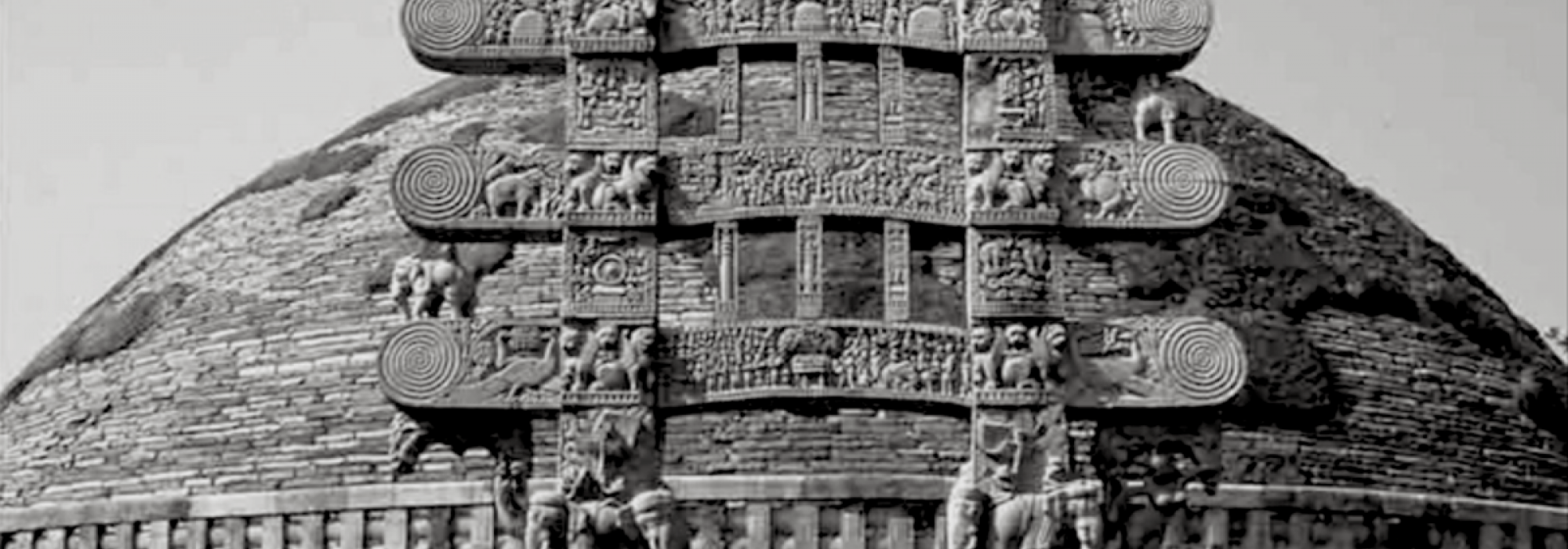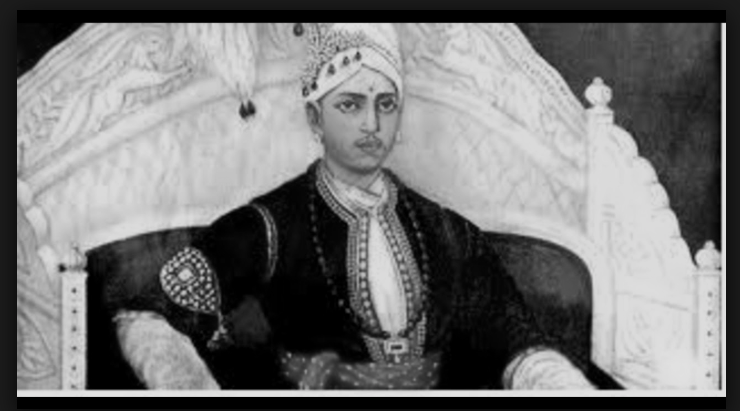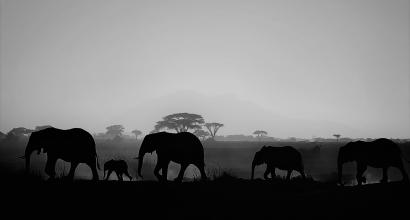The fact that Shiladitya Harshavardhana developed greater fondness towards Buddhism in his later years is evident from his own writings. Three Rupakas whose authorship can be attributed to Harshavardhana are extant. He has also written a few Stotras (loosely, “hymns”) and a collection of independent verses. His Rupakas, “Priyadarshika,” “Ratnavali,” and “Nagananda” continue to remain popular amid lay persons and scholars alike. “Priyadarshika” and “Ratnavali” belong to the “Natika” genre of “Drishyakavya” (dramatic poetry enacted on stage). Both these are faithful imitations of Kalidasa’s “Malavikagnimitra.” They contain very beautiful usages of both form and content, sense and substance. However, the subject of these works is not profound. But the poet has indeed carried out some intricate work in a lovely fashion. “Priyadarshika” has distinguished itself by introducing a new dramatic storytelling technique called “Garbhanka” [play within a play]. “Ratnavali” has earned acclaim for weaving beautiful episodes. The language and style of both these works are equally pleasing. However, some commentators of Mammata’s “Kavyaprakasha” have alleged that these works were actually authored by a poet named Dhavaka and that Harshavardhana paid him money and ascribed its authorship to himself. Personally, this argument doesn’t seem plausible. Harshavardhana was himself a great scholar. There are plenty of examples which show that our kings have authored truly remarkable works of literature. But there are always exceptions. This kind of authorship-related mischief was let loose by our so-called modernists: especially the Leftists who have been deeply influenced by Muslim and (colonial) English literature. Akbar was a thorough illiterate. Apart from copying out the Koran every day, Aurangzeb knew no other literature. It is therefore a gross blunder to blindly attribute the same trait to Hindu kings. In this connection, we notice that a considerable corpus of literature had grown in regard to the education of Hindu princes. In fact, numerous scholar-poets like Bharavi, Magha, Shivaswami, Ratnakara and others wrote their work with an intent to educate Hindu princes. Indeed, merely studying these works which are imbued with a vast array of academic disciplines and written in exalted prose will endow a person with erudition. Such works weren’t written at some antiquarian era; we have records to show that this kind of work occurred in recent vintage. We can cite the example of Anandagajapathi, the Maharaja of the Pithapuram Princely State in the Andhra region. The great Shatavadhani duo Tirupati Venkatakavulu [Challapilla Venkata Sastri and Diwakarla Tirupati Sastri] records in his work, “Nanarajasandarshana” that Anandagajapati was a crowning scholar of Grammar. His words are endorsed by numerous scholar-poets and Shatavadhanis such as Kashi Krishnacharya, Maadabhushi Venkatacharya and the Devulapalli Brothers. The history of Andhra Pradesh also records this fact. Equally, there were Maharajas of this caliber in places such as Atmakuru, Vikramapuri, and Vanaparti. The ruler of the Vijayanagaram Princely State extended monetary support for an edition of the Rg Veda together with Sayana’s commentary, which was compiled by Max Mueller. The Maharajas of the Cochin Princely State were scholars of the highest order. Even to this day, the Maharaja of Cochin organizes scholarly conferences. He personally participates in Vakyarthas involving such subjects as Sanskrit Grammar, Tarka (Logic), and Vedanta. The veteran scholar of (Sanskrit) Grammar, Sri N T Srinivasa Iyengar was personally put through an examination by the Cochin Maharaja who then bestowed the title of “Panditaraja” upon him. Equally, the Travancore Princely State witnessed a galaxy of great scholar-Maharajas including Swati Tirunal, Moolam Tirunal, Karthika Tirunal, and Vishakha Tirunal. These eminences were also scholar-poets. Even as we speak, this royal family comprises numerous experts in literature and music.
The lineage of Mysore Maharajas were extraordinary scholars. Krishnaraja Wodeyar III was an author of numerous learned texts. Krishnaraja Wodeyar IV was an accomplished musician. His father, Chamaraja Wodeyar was an expert violin exponent. Jayachamaraja Wodeyar was a composer of musical pieces and an author of several scholarly works. Indeed, we find several such instances. And so, disregarding all of these, we have mischievous arguments deliberately calculated to insult the accomplishments of Hindu kings on the following lines: “Krishnadevaraya paid money to Allasani Peddana and appropriated Amuktamalyada to his name; how else would the opening verses of Peddana’s Manucharitramu, praising Krishnadevaraya be repeated in Amuktamalyada as well?” The fact is that in terms of style, there is a sea of difference between Krishnadevaraya’s famed Amuktamalyada and Manucharitramu. The linguistic and descriptive styles in the two are so stark that it’s impossible for the same poet to have authored both works. It is possible that Krishnadevaraya was hesitant to praise himself in his own work, and that some later poet selected this laudatory verse from Peddana’s work and added it to a manuscript of Amuktamalyada. We find several such instances. We can dwell on this point at some length in the discussion on Bhojaraja later in this book. The chances of accepting that Harshavardhana was a scholar-poet are pretty high. It’s not our claim that every single king was a poet. There are some kings who have had works ghostwritten by other poets and then earned fame by appropriating such works as their own. But if this was indeed so simple, if all kings didn’t have any notion of self-respect, everyone would’ve indulged in appropriation, every king would be a poet. But the truth is just the opposite.
The Merits and Limitations of Harshavardhana
“Nagananda” is a play of a high standard embodied with beauty and feeling. Rasas like Shringara (love, erotics), Dharmavira (heroism in upholding Dharma), Dayavira (heroism of compassion) and Hasya (comedy) have all been etched well. From any perspective, this is indeed a great Rupaka. However, we do not detect the glory of Buddhism in any Rupaka authored by Harshavardhana. Only in “Nagananda,” we find a glorification of Bodhisattva in the Mangalasloka. But even here, everybody is finally blessed by Gauri, a Deity of Sanatana Dharma and not by a Buddhist Deity like Tarabhagavati. The Naandi slokas (invocatory verses) of Harshavardhana’s other two Rupakas contain praise of Shiva. We have historical records that show that when Harsha performed Daana (charity, giving away) in Prayag once every five years, he also offered Puja to Shiva, Vishnu, Surya, Bodhisattva, and Shakti. The great Shiva devotee and traditional Srotriya Brahmana, Banabhatta was the court poet of Harshavardhana. Likewise, the devout Sanatani Mayura was also a decorated poet in his court. His Shataka (collection of 100 verses) on Surya composed in a grand style remains very popular. Owing to these and other reasons, we can unequivocally say that Harshavardhana was not a religious fanatic. Perhaps, in the later part of his life, he developed greater fondness towards Buddhism. The moment he came under its influence, his control over administration slackened and misplaced compassion and generosity increased, which in turn led to a weakening of the spirit of Kshatra. We observe the same thing in Ashoka. After winning the Kalinga war and occupying its territory, Ashoka developed renunciation. In pretty much the same way, Harsha developed renunciation after tasting defeat on the banks of the Narmada at the hands of the Chalukya king, “Dakshinapatheshwara,” “Satyashraya” Pulakeshin II. Perhaps, this is the reason for the proverb which avers that the one who wins the war loses, and the one who loses dies. In Ashoka’s case, he was the victor who lost. Indeed, if one lakh people died in the Kalinga war, that essentially means that his own people died in large numbers—fifty thousand at least. This haunted Ashoka. In the same manner, the one major defeat that Harshavardhana experienced proved fatal. It brought dejection with it. We temporarily seek solace in something to obtain peace of mind. And after finding the said solace, we assume that it’s the only solace and philosophy of life for everybody. But when we attempt to mould the entire nation based on this philosophy of temporary solace, it leads to impropriety. If Ashoka was struck by a sense of renunciation, he should have ideally coronated one of his children or a suitable person and retired from rulership. Instead, he remained on the throne. There’s no record that shows that he retired to the Buddhist Sangha as a full time Bhikku. The same thing occurred in Harsha’s case. The moment a king develops renunciation, he needs to pass on the succession to a competent person and not continue to sit on the throne himself. If such a renunciate king imposes his version of renunciation on his dominion, he loses his valour and the country falls into ruin. This is the precise and clear message we derive from the examples of Ashoka and Harsha. Jawaharlal Nehru who followed their path eventually experienced a humiliating loss of face in the war with China. Prior to this war, Nehru hankered after China under the garb of “Panchsheel.” However, that policy was neither faithful to Buddha’s original conception nor was it honest. When we regard it from any perspective, we find that Sanatana Dharma is far more exalted when compared to Buddhism. Indeed, it was possible only for Sanatana Dharma to give birth to a sect like Buddhism. However, it wasn’t possible for Buddhism to germinate a sect that was greater than or equal to itself. This was the reason that only despicable cults and weeds like Vajrayana, Sahajayana, Mahachina, and Guhyasamaja germinated as its offshoots. Whereas there is a centuries’ long tradition of Rishis in Sanatana Dharma. This tradition has revealed a rest house of solace and a philosophy rooted in Atma, which accommodates a multifaceted society. Jawaharlal Nehru never showed respect for Sanatana Dharma. If he has written some immature and emotionally-charged, positive words about it, it is simply an outcome of a state of mental accident. It’s true that he’s written some soulful lines about Adi Shankara and Ganga—we see snatches of this in some of his books and letters. However, none of these stem from his soul, none of these are rooted in genuine conviction and none of these are the result of honest reflection. He would visit Sri Lanka and circumambulate the Buddhist Sangharamas and Viharas there. Within his own country, he would throw a huge fit to even set foot inside a Hindu temple. When the grand Somanatha Temple was rebuilt, he didn’t attend the opening ceremony. Not just that, he also threw an obstacle in the path of President Rajendra Prasad who wanted to attend it. Akin to speaking the language of compassion to a butcher, Nehru waxed eloquent on the message of Buddhism to China. The consequence was completely along expected lines. The country that came to our rescue at that hour was the same capitalist America, which Nehru thoroughly despised. Although Nehru was severely demoralized after the loss in the 1962 war, he didn’t let go of his throne till his death. Even then, he had made all shady arrangements for his daughter to succeed him. It becomes clear when we observe the old newspaper pictures: we see Indira Gandhi accompanying him wherever he went, files in her hand. This is not an exception—it continued like a tradition. This adversity occurs when we follow a principle that’s opposed to Brahma and Kshatra. Every single ruler right from Ashoka, Kanishka, Harsha, and Nehru have repeatedly proven it. The Gupta Emperors had granted extraordinary munificence to Buddhism. So had the Pala, Sena, Maukhari, Chalukya, and Pratihara kings. The Hoysalas placed Jainism at an exalted standard and viewed it with great reverence. Equally, they didn’t passively sit by chanting the mantra of non-violence. Likewise, although the Kalingas, Chandelas, Rashtrakutas, Paramaras and Pratiharas extended generous patronage and respect towards Jainism, all of them had retained the inspiration of Kshatra. The greatest warrior of the Rashtrakutas was Amoghavarsha Nrupatunga. He was the disciple of the Jain monk and teacher Gunabhadracharya who in turn was the disciple of the Jain Muni, Jinasenacharya. Despite this, he never succumbed to faint-heartedness. Nor did he harm the spirit of Kshatra. Truly speaking, those who are in politics and administration must keep action and renunciation in separate compartments within themselves like D.V Gundappa did in our own time. They must follow both after assigning them their proper place. Perhaps because Harshavardhana lost to Pulikeshi II, he did not earn distinction in the latter part of his life. To be continued Translated by Hari Ravikumar and Sandeep Balakrishna









































